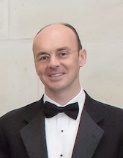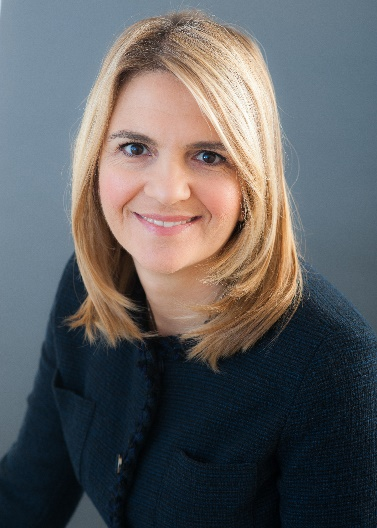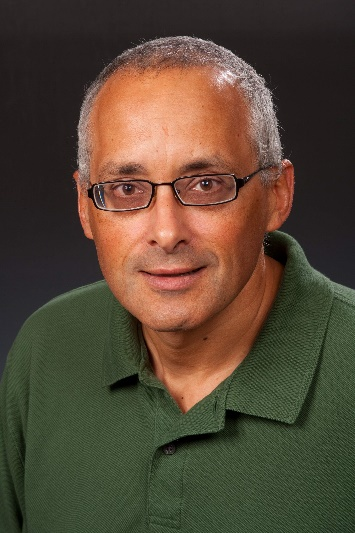Fourth International Balkan Conference on Communications and Networking
Novi Sad, Serbia, June 03-05, 2020
Fourth International Balkan Conference on Communications and Networking
Novi Sad, Serbia, June 03-05, 2020
Wireless Future for 2020 and Beyond
Keynote Speakers
Fundamental Limits of Deep Neural Network Learning
 |
Helmut Bölcskei Professor, Department of Electrical Engineering |
Abstract
We develop the fundamental limits of learning in deep neural networks by characterizing what is possible if no constraints on the learning algorithm and the amount of training data are imposed. Concretely, we consider Kolmogorov-optimal approximation through deep neural networks with the guiding theme being a relation between the complexity of the function (class) to be approximated and the complexity of the approximating network in terms of connectivity and memory requirements for storing the network topology and the associated quantized weights. The theory we develop educes remarkable universality properties of deep networks. Specifically, deep networks are optimal approximants for vastly different function classes such as affine systems and Gabor systems. In addition, deep networks provide exponential approximation accuracy—i.e., the approximation error decays exponentially in the number of non-zero weights in the network—of widely different functions including the multiplication operation, polynomials, sinusoidal functions, general smooth functions, and even one-dimensional oscillatory textures and fractal functions such as the Weierstrass function, both of which do not have any known methods achieving exponential approximation accuracy. We also show that in the approximation of sufficiently smooth functions finite-width deep networks require strictly smaller connectivity than finite-depth wide networks.
Short Biography
Helmut Bölcskei is a Professor of Mathematical Information Science at ETH Zürich in the Department of Electrical Engineering, also associated with the Department of Mathematics. His research interests are in applied mathematics, machine learning theory, mathematical signal processing, data science, and statistics. He received the 2001 IEEE Signal Processing Society Young Author Best Paper Award, the 2006 IEEE Communications Society Leonard G. Abraham Best Paper Award, the 2010 Vodafone Innovations Award, the ETH "Golden Owl" Teaching Award, is a Fellow of the IEEE, a 2011 EURASIP Fellow, was a Distinguished Lecturer (2013-2014) of the IEEE Information Theory Society, an Erwin Schrödinger Fellow (1999-2001) of the Austrian National Science Foundation (FWF), was included in the 2014 Thomson Reuters List of Highly Cited Researchers in Computer Science, and is the 2016 Padovani Lecturer of the IEEE Information Theory Society. He has been a delegate for faculty appointments of the president of ETH Zürich since 2008.
Ultra-Low-Latency Millimeter Wave Networking using True-Time-Delay Array Architecture
 |
Danijela Cabric Professor, Electrical and Computer Engineering Department |
Abstract
Future generations of millimeter wave networks (mmW-nets) will operate in the upper mmW frequency band where ≥ 10 GHz bandwidth can be used to meet the ever increasing demands. Their realization will demand addressing a completely new set of challenges including wider bandwidths, larger antenna array sizes, and higher cell density. These new system requirements demand fundamental rethinking of radio architectures, signal processing, and networking protocols. Major breakthroughs are required in radio front-end architectures to enable wideband mmW-nets, as most commonly adopted phased antenna array (PAA) based radios face many challenges in achieving fast beam acquisition, interference suppression and wideband data communication. This talk will present the potential of true-time-delay (TTD) based array architecture for wideband mmW-nets for low latency initial beam training and data communication.
Short Biography
Danijela Cabric is Professor in the Electrical and Computer Engineering Department at the University of California, Los Angeles. Her research interests include novel radio architectures, signal processing, communications, machine learning and networking techniques for cognitive radio, 5G and massive MIMO systems. Dr. Cabric received the Samueli Fellowship in 2008, the Okawa Foundation Research Grant in 2009, Hellman Fellowship in 2012 and the National Science Foundation Faculty Early Career Development (CAREER) Award in 2012. She served as an Associate Editor in IEEE Journal on Selected Areas in Communications (Cognitive Radio series) and IEEE Communications Letters, and TPC Co-Chair of 8th International Conference on Cognitive Radio Oriented Wireless Networks (CROWNCOM) 2013. She is now an Associate Editor of IEEE Transactions of Cognitive Communications and Networking, IEEE Transactions on Wireless Communications and IEEE Transactions on Mobile Computing. She is a Senior Member of IEEE and ComSoc Distinguished Lecturer.
The Age of Information: Status Updates for Real-time Systems
 |
Roy Yates Professor, Electrical and Computer Engineering Department |
Abstract
Increasingly ubiquitous network connectivity has engendered applications in which sources such as environmental sensors, video cameras, and autonomous vehicles send updates of their status to interested recipients. These applications require timely status updates at the recipients; however, this is typically constrained by limited communication and network resources. We describe an Age-of-Information (AoI) timeliness metric for the evaluation of status update systems and we characterize the AoI requirements of a range of real-time applications. We derive general methods for calculating AoI that we apply to system abstractions of sources, monitors, networks, and edge cloud processors. We identify optimal updating policies based on the bandwidth and energy constraints of the senders and system. We observe that optimal updating policies can be counter-intuitive and differ from the throughput/delay tradeoffs that typically describe low latency networking.
Short Biography
Roy Yates received the B.S.E. degree in 1983 from Princeton and the S.M. and Ph.D. degrees in 1986 and 1990 from MIT, all in Electrical Engineering. Since 1990, he has been with the Wireless Information Networks Laboratory (WINLAB) and the ECE department at Rutgers University. Presently, he is a Distinguished Professor with WINLAB and the ECE Dept. He is an author (with David Goodman) of Probability and Stochastic Processes: A Friendly Introduction for Electrical and Computer Engineers published by John Wiley and Sons, currently in its third edition. He is a 2011 IEEE Fellow and a recipient of the 2003 IEEE Marconi Prize Paper Award in Wireless Communications, the best paper award for the ICC 2006 Wireless Communications Symposium, and the 2011 Rutgers University Teacher-Scholar award.
Dr. Yates is a past associate editor of the IEEE Journal on Selected Areas of Communication Series in Wireless Communication and also a past Associate Editor for Communication Networks of the IEEE Transactions on Information Theory.
Conference Series